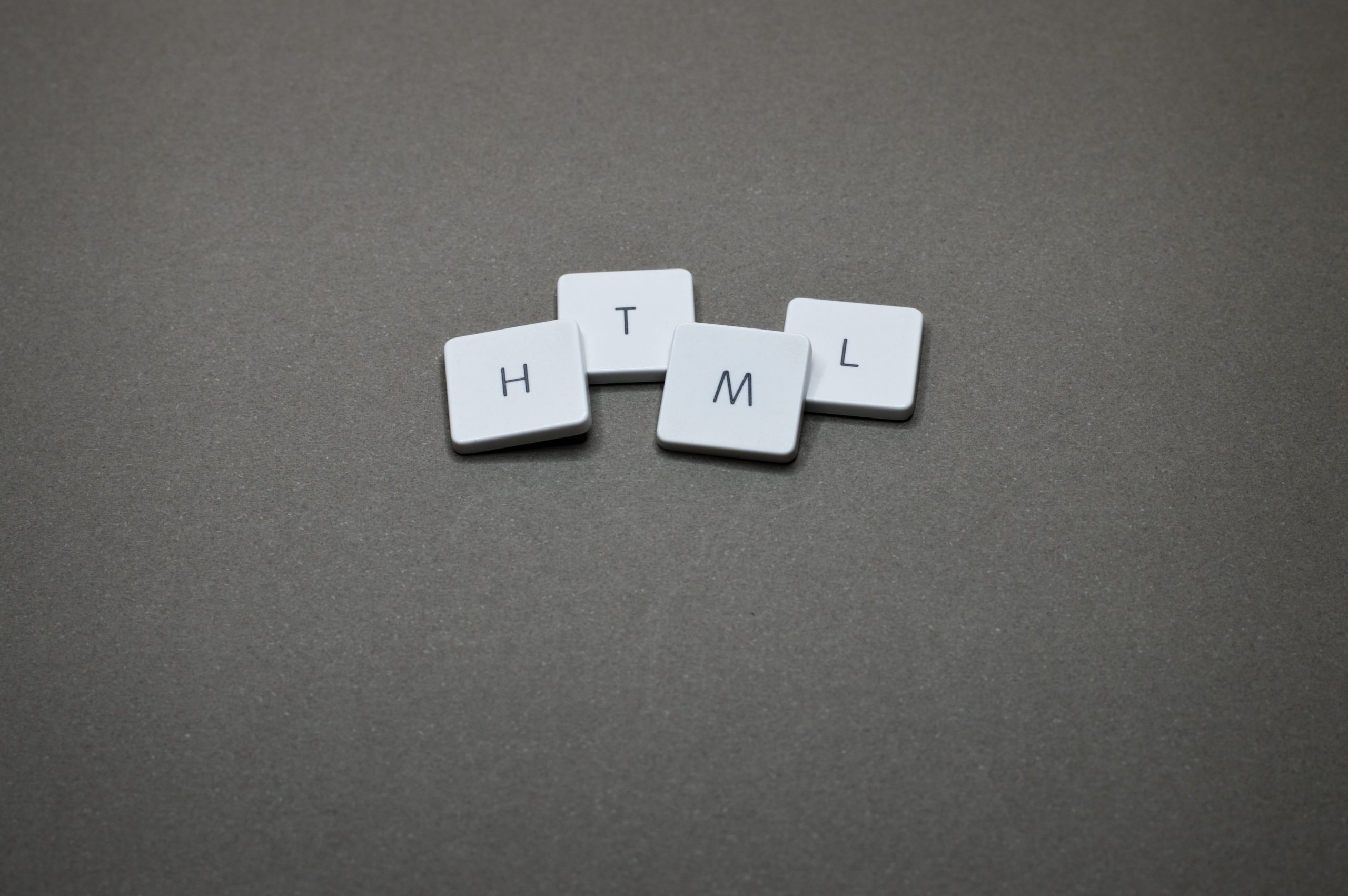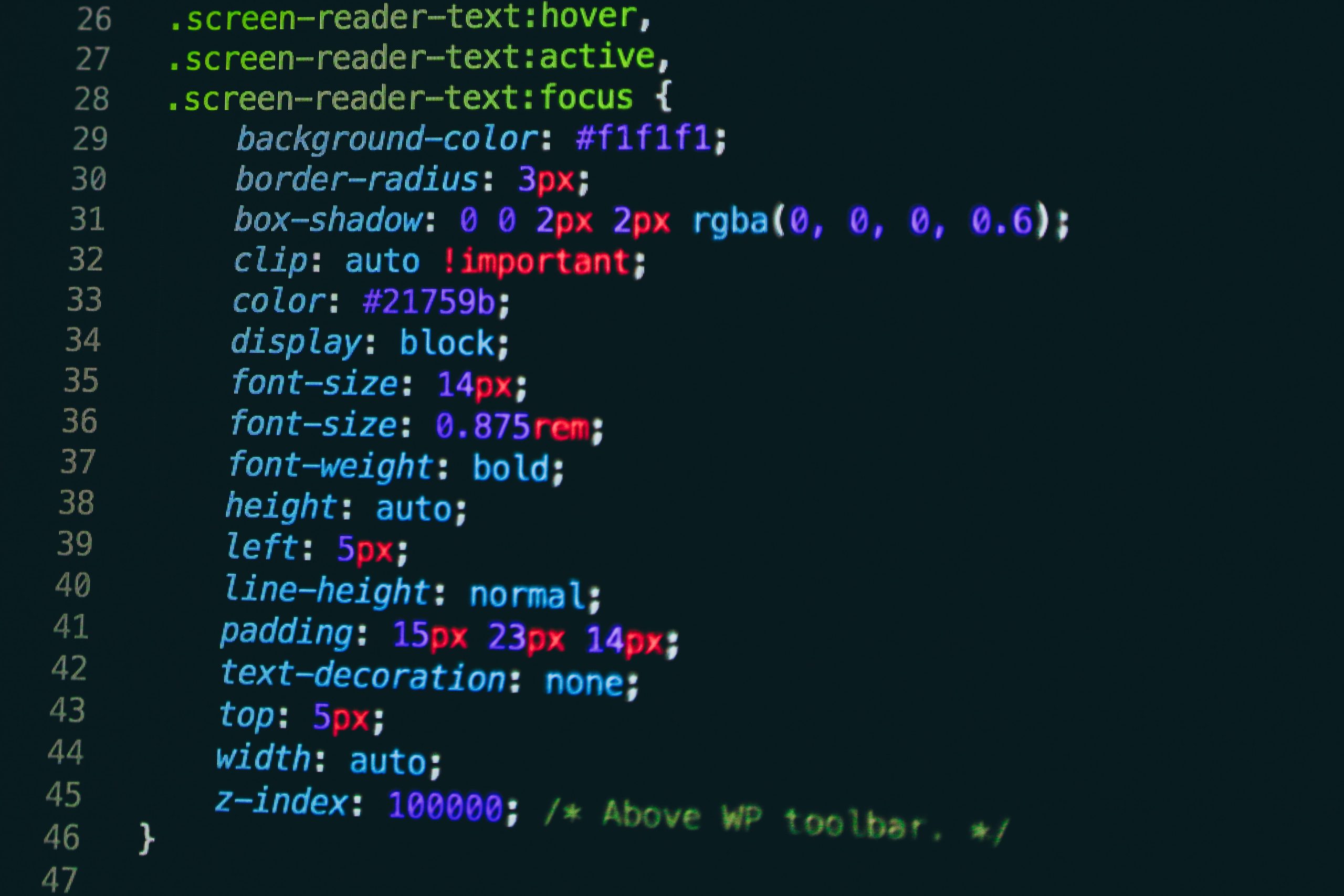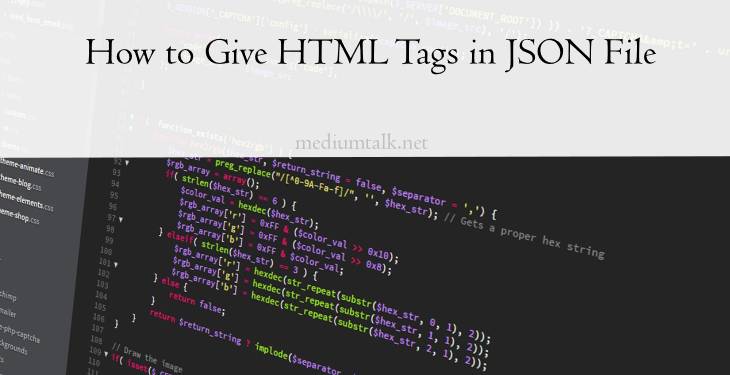The purpose of this article is to explain how to accurately provide HTML tags in JSON files. JSON, or JavaScript Object Notation, is a lightweight data-interchange format used for structuring and storing data. It is often used when exchanging information between web applications and APIs. In order for the browser to render HTML elements from the JSON file, it must be given in a specific format. This article will discuss the steps necessary to successfully give HTML tags in a JSON file.
JSON & HTML
JSON (JavaScript Object Notation) is a widely used data-interchange format that allows you to store and exchange data between different applications. It is easy to read by both humans and machines, making it perfect for web development. However, when working with JSON files, it can be challenging to add HTML tags to the text fields without breaking the code. Fortunately, there are ways to give HTML tags in JSON files.
One approach is to use Unicode characters that represent the HTML tags. For instance, “\u003c” represents “<“, “\u003e” represents “>”, and so on. You can insert these characters in your JSON file where you want the HTML tag to appear. This method ensures that the actual character is inserted into the field instead of an interpreted version of it.
Another option is using a third-party library such as Handlebars.js or Mustache.js that allows you to create templates with placeholders for your data fields. The libraries then parse your JSON file and replace the placeholders with their corresponding values while also adding any necessary HTML tags in place of placeholders where needed.
In conclusion, adding HTML tags in JSON files might seem like a tricky task at first glance but can be achieved using various methods such as using Unicode characters or third-party libraries such as Handlebars.js or Mustache.js. These approaches help preserve integrity while ensuring proper representation of data through robust web development practices.

Parsing HTML in JSON
When working with APIs or web development, it is often necessary to parse HTML tags in a JSON file. HTML tags are used to structure and format content on web pages, while JSON files provide a way to store and exchange data in a standardized format. To include HTML tags in a JSON file, it is important to correctly encode the special characters used by HTML.
One common approach to parsing HTML in JSON is to use JavaScript’s built-in DOMParser object. This object allows developers to create an XML document from an HTML string and then manipulate the resulting document using standard XML methods. This can be useful for extracting specific elements or attributes from the HTML code contained within a JSON file.
Another option for parsing HTML in JSON is to use third-party libraries such as Cheerio or jQuery. These libraries provide powerful tools for navigating and manipulating HTML documents, allowing developers to easily extract relevant information from complex structures. Ultimately, the choice of approach will depend on the specific requirements of your project and your familiarity with different programming languages and libraries.
Writing HTML Tags in JSON
One of the ways to give HTML tags in a JSON file is by using the “innerHTML” property. This property allows you to insert HTML content within an element. To use this method, first create a variable that stores your JSON data. Next, access the element where you want to display your JSON data and set its innerHTML property equal to the JSON data variable.
Another way to insert HTML tags in a JSON file is by using JavaScript’s createElement() method. This method creates an HTML element based on the specified tag name and returns it as an object. You can then add attributes and text content to this object before appending it as a child element of another parent element.
It’s important to note that while inserting HTML tags within a JSON file may be useful for certain applications or scenarios, it also presents security risks if not properly implemented and validated. Care should be taken when allowing user input or third-party data into your codebase, as not doing so could leave your website vulnerable to cross-site scripting (XSS) attacks.

Making sure the Syntax is Correct
When working with HTML tags in a JSON file, it’s essential to ensure that the syntax is correct. One of the most common errors is not closing tags properly. This mistake can lead to unexpected behavior and even break your code entirely. To avoid this issue, always double-check that all opening tags have corresponding closing tags.
Another important aspect of correct syntax when using HTML tags in a JSON file is ensuring that the content within each tag follows proper formatting guidelines. For example, if you’re using a paragraph tag, make sure that all text within it is enclosed by the tag and any necessary attributes are included correctly.
Finally, it’s also crucial to be mindful of how your HTML tags will be interpreted by different browsers and devices. While some elements may work well on one platform, they may not display correctly or at all on another. By taking these factors into account and ensuring your syntax is accurate and consistent throughout your code, you can create web pages that are accessible and functional across multiple platforms and devices.
Rendering HTML from JSON
Rendering HTML from JSON is a crucial task in modern web development. It involves parsing JSON data and converting it into HTML tags to be displayed on a website or application. One of the main benefits of using this technique is that it allows developers to separate data from presentation, which makes it easier to maintain and update the website.
To give HTML tags in a JSON file, developers can use various techniques such as templating engines like Handlebars.js or Mustache.js. These engines allow for easy integration with JSON data and provide simple syntax for creating dynamic templates. Alternatively, developers can also create custom functions that parse the JSON data and generate HTML tags dynamically.
However, it’s essential to ensure that input validation is performed before rendering any content on the page as this can cause security concerns such as cross-site scripting (XSS) attacks. Developers should always sanitize user inputs by removing any malicious code before rendering them on the page. In conclusion, rendering HTML from JSON requires careful consideration and attention to detail to ensure an optimal user experience while maintaining security standards.

Adding CSS to HTML in JSON
Adding CSS to HTML in JSON is an essential step in creating a dynamic and visually appealing website. In order to add CSS to HTML in JSON, you need to understand the structure of JSON files and how they interact with HTML tags. One way to do this is by using JavaScript Object Notation (JSON) as a data format for your web pages.
To give HTML tags in JSON file, start by creating a new CSS file that defines styles for the various elements on your page. This might include font sizes, colors, margins, and padding. Next, link this CSS file to your HTML document using the link tag or by embedding it directly into the header of your HTML code.
Once you have created your CSS file and linked it to your HTML document, you can add specific styles to individual elements using class or ID selectors. These selectors allow you to target specific elements on the page and apply custom styles based on their unique characteristics. By adding CSS rules directly into your JSON data objects, you can create more flexible and responsive designs that adapt easily across different devices and screen sizes.
Conclusion: Benefits of Using JSON for HTML Tags
In conclusion, using JSON for HTML tags offers several benefits that make it a popular choice among developers. Firstly, it simplifies the process of creating and managing dynamic web applications. By allowing data to be transferred in a compact format, JSON minimizes the amount of code required to build complex web pages.
Secondly, JSON is easy to read and understand. This makes it an ideal choice for developers who are new to coding or those who want to quickly implement changes without having to spend too much time figuring out how things work.
Finally, JSON is highly versatile and can be used across multiple programming languages. Whether you are building web applications using JavaScript or server-side applications with PHP or Python, JSON provides a flexible solution for exchanging data between different platforms.
Overall, the use of JSON for HTML tags offers numerous advantages that make it an essential tool in modern-day web development. Its simplicity, readability and versatility have made it a go-to option for many developers looking to create robust and scalable applications while minimizing development time and costs.
